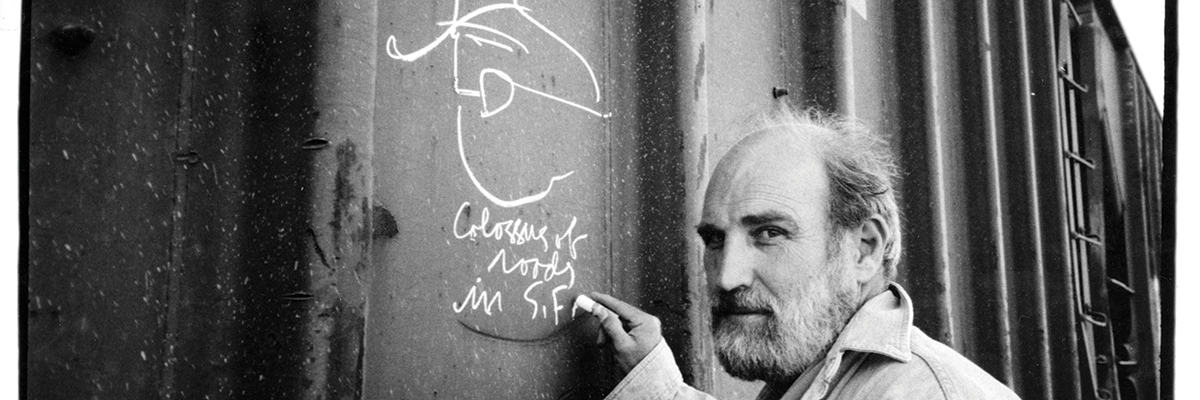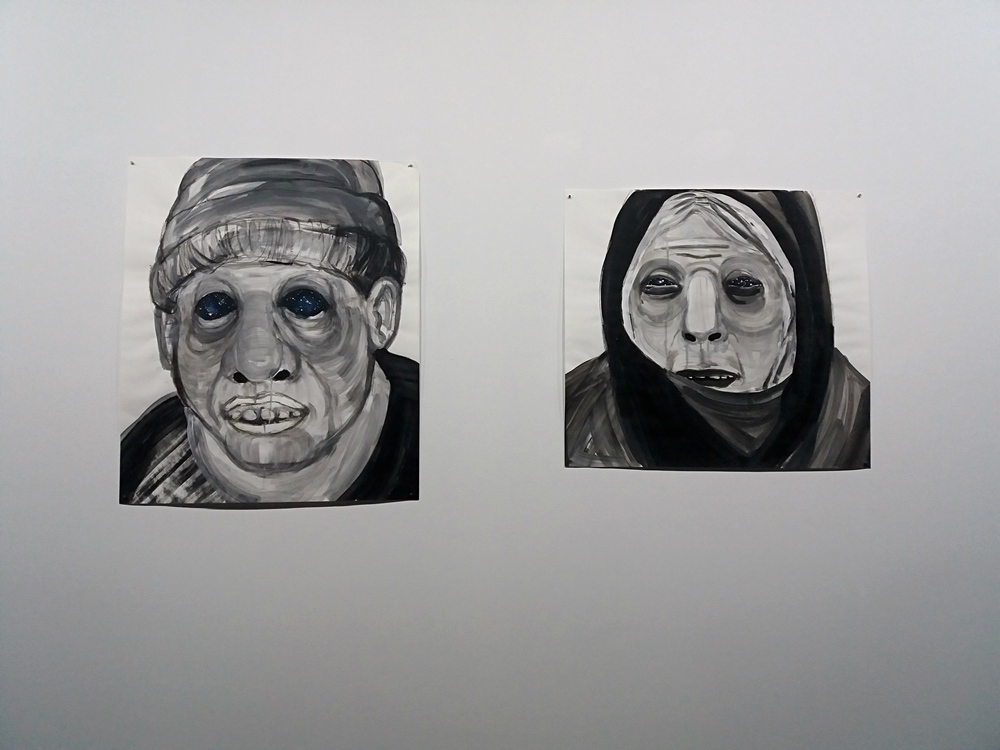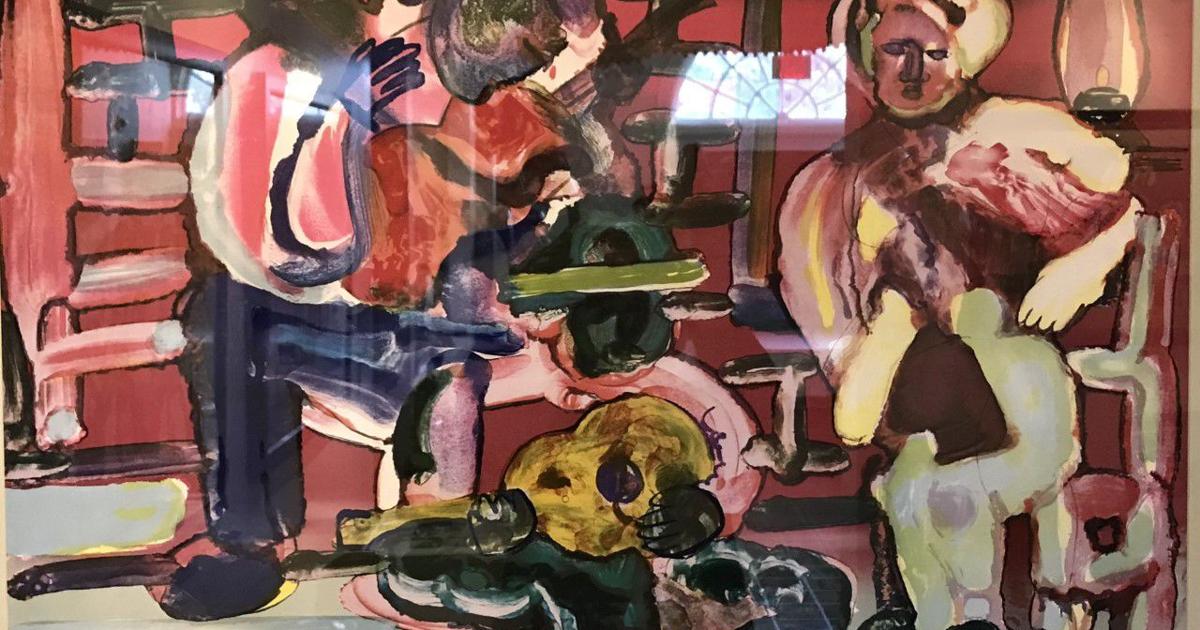Armless
2005 - Drawing & Print (Drawing & Print)
158 x 104 cm
Chloe Piene
The figure in Armless tapers away. Muscular legs turned upright spin down into a disintegrating torso. Lines, that in another drawing would sketch out contours and volume, here seem to be strands of flesh. They hang down from full feet and flutter into nothingness as the form becomes less and less present. The armlessness is named but the lack of a head, which one can possibly make out becoming strewn lines, suggests a top-to-bottom dissolution.
Chloe Piene’s work often depicts the body and its skeleton. Her drawings spindle extremities into thin loops of line and her sculptures stack skulls on slabs of clay. The fragile twisting of the body is executed in luxuriously rich materials, which underscore the virtuosity of Piene’s hand and vision. Skeletons on vellum make physical mortality transcendently transparent, and beautiful charcoal lines mark out the uncanny grins of skull-faces.
Colors:
Related works featuring themes of: » Contemporary Grotesque, » Drawing, » Erotic, » Etching/Engraving, » American
» see more

© » KADIST
Patty Chang
The video “Shangri-La” refers to the mythical city of James Hilton’s novel “Lost Horizon” written in 1933 and is exemplified in a film by Frank Capra which speaks of eternal youth in a city of happiness...

© » KADIST
Milena Bonilla
2009Milena Bonilla’s discursive practice explores connections among economics, territory, and politics through everyday interventions...

© » KADIST
Robert Therrien
1985In No Title (Blue Chapel) Therrien has reduced the image of a chapel to a polygon...

© » KADIST
Edgar Arceneaux
2006Untitled (Wheelchair Drawing) is a ten-foot photo transfer of the image of a wheelchair with burning embers in its seat...
Other related works, blended automatically
» see more

© » KADIST
Patty Chang
The video “Shangri-La” refers to the mythical city of James Hilton’s novel “Lost Horizon” written in 1933 and is exemplified in a film by Frank Capra which speaks of eternal youth in a city of happiness...

© » KADIST
Milena Bonilla
2009Milena Bonilla’s discursive practice explores connections among economics, territory, and politics through everyday interventions...

© » KADIST
Robert Therrien
1985In No Title (Blue Chapel) Therrien has reduced the image of a chapel to a polygon...

© » KADIST
Koki Tanaka
2009Walking Through is one of a series of videos—sometimes humorous, often absurd—that record the artist’s performative interactions with objects in a particular site...
Related works sharing similar palette
» see more

© » BROOKLYN STREET ART
buZ Blurr, One Telling of the “Origin Story” at Straat Museum Amsterdam | Brooklyn Street Art BROOKLYN STREET ART LOVES YOU MORE EVERY DAY In the shifting culturescapes of urban contemporary art, STRAAT Museum’s latest exhibition, “Moniker: An Origin Story,” emerges as a poignant narrative that bridges the transient heritage of hobo monikers with the vibrant pulse of today’s street art scene...

© » THE RE:ART
Lea Rasovszky - Dig the Inbetween - The re:art Lea Rasovszky – Dig the Inbetween book launch On March 17th, 2017, Lea Rasovszky launched her book Dig the Inbetween, a collaboration with graphic designer Larisa Sitar and curator and art critic Diana Marincu , together with a one-night only exhibition at Mobius Gallery in Bucharest...
Related artist(s) to: Chloe Piene » Andy Warhol, » Gabriel Orozco, » Gianni Motti, » Raymond Pettibon, » Rosemarie Trockel, » Sandra Vásquez, » Tacita Dean
» see more

© » KADIST
Tacita Dean
2001The photographic quality of the film Baobab is not only the result of a highly sophisticated use of black and white and light, but also of the way in which each tree is characterized as an individual, creating in the end a series of portraits...

© » KADIST
Gabriel Orozco
1992Gabriel Orozco often documents found situations in the natural or urban landscape...

© » KADIST
Gabriel Orozco
1994Charco portátil congelado (Frozen Portable Puddle, 1994) is a photographic record of an installation of the same name that Gabriel Orozco made at Witte de With Center for Contemporary Art in Rotterdam for the group exhibition WATT (1994)...

© » KADIST
Raymond Pettibon
2000Untitled (Wall Street’s Chosen Few…) is typical of Pettibon’s drawings in which fragments of text and image are united, but yet gaps remain in their signification...
Related works found in the same semantic group
» see more

© » KADIST
Pascal Shirley
2006Gypsy shows an ambivalent scene, in which broken blinds and its unsmiling subject are balanced with the stilllife plentitude of watermelon slices and the beautifully lit nudity of the sitter...





